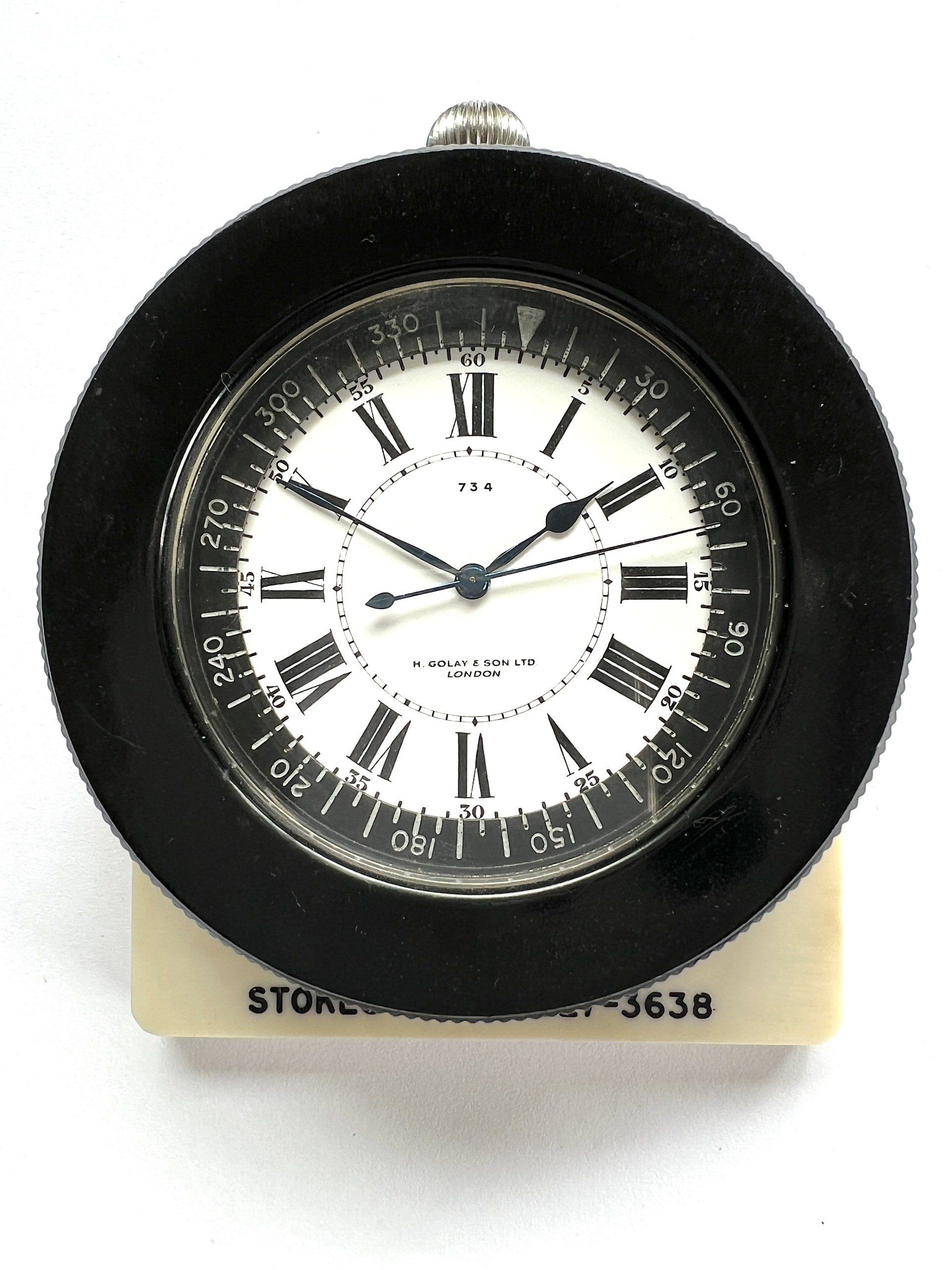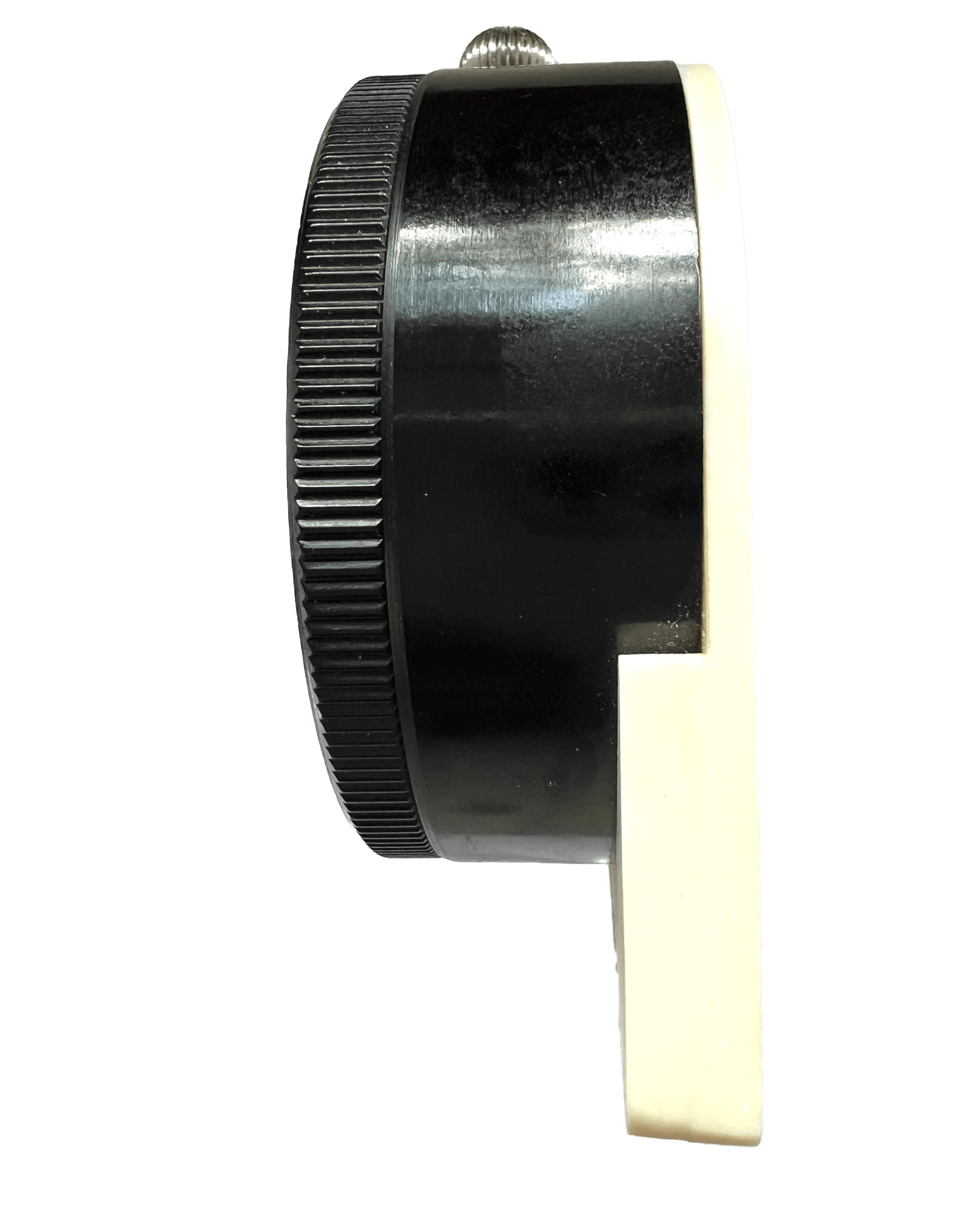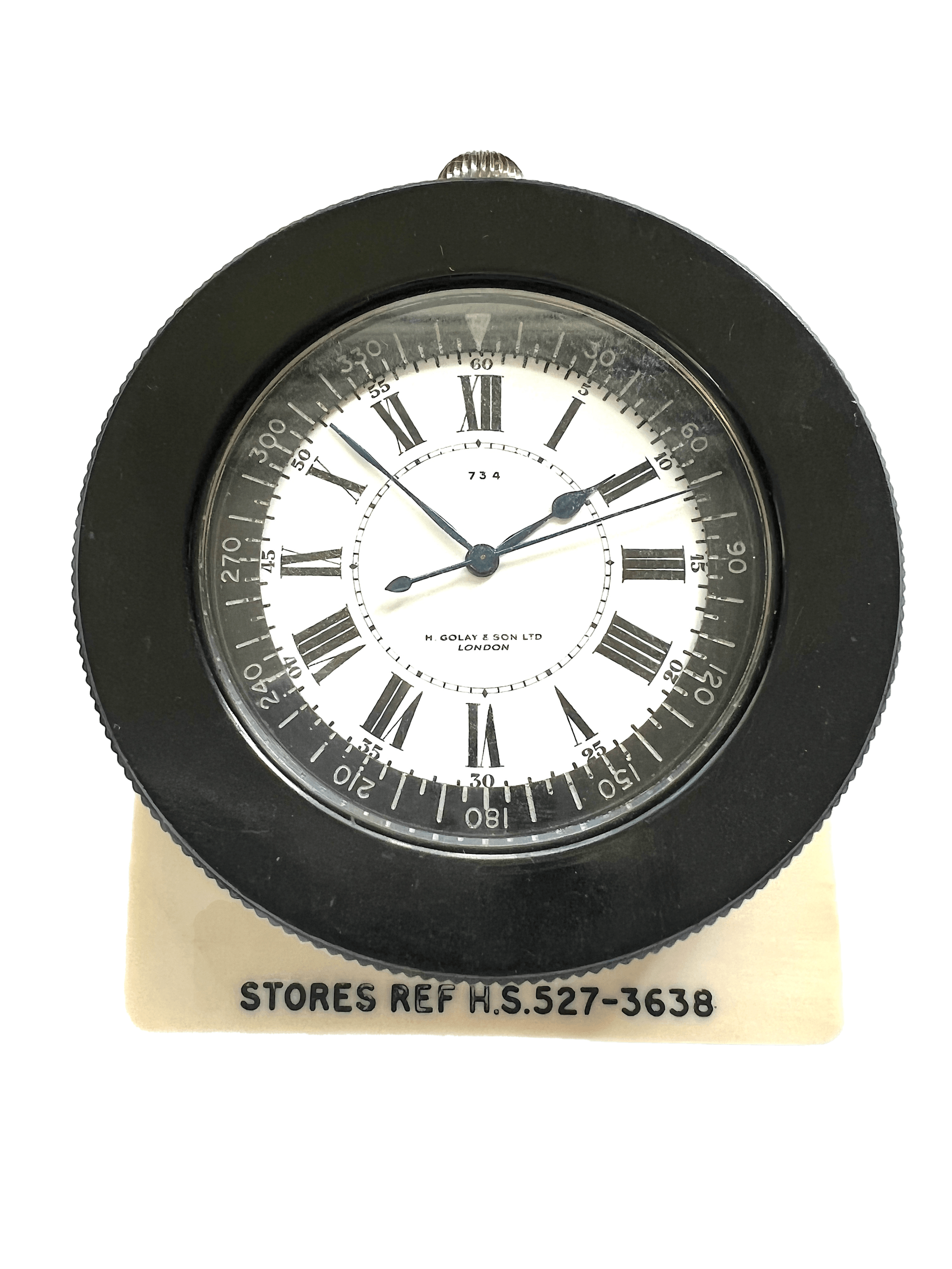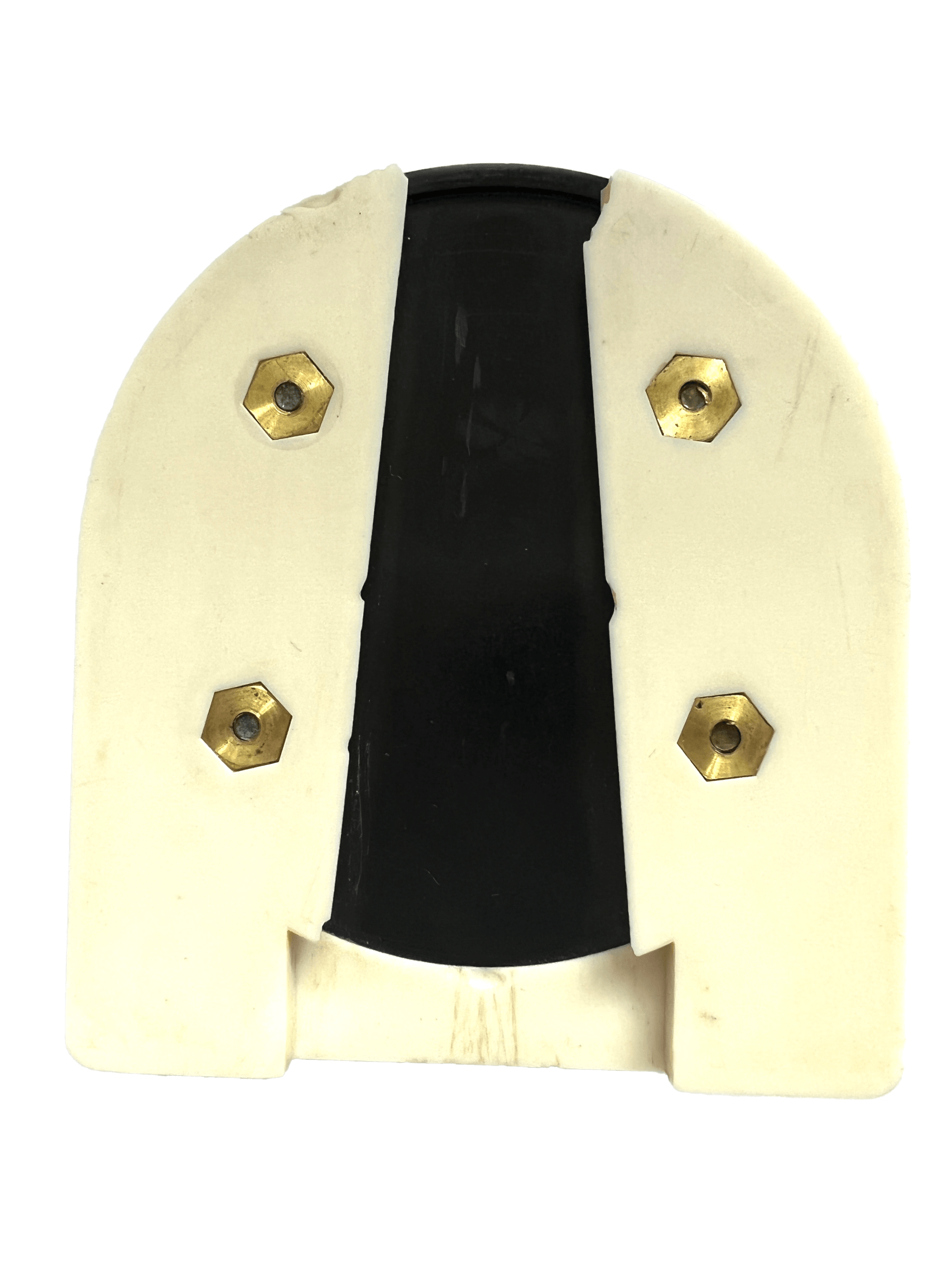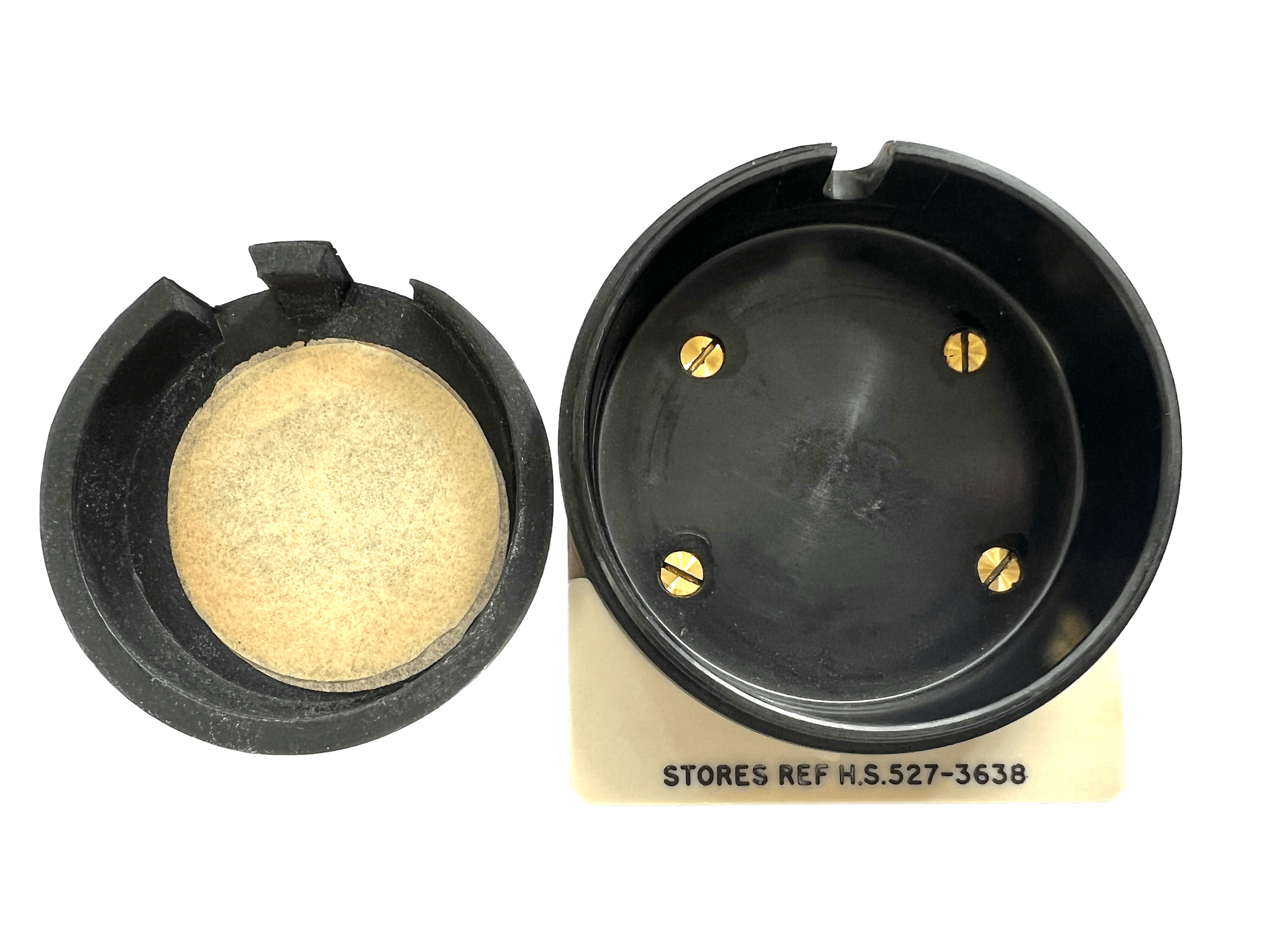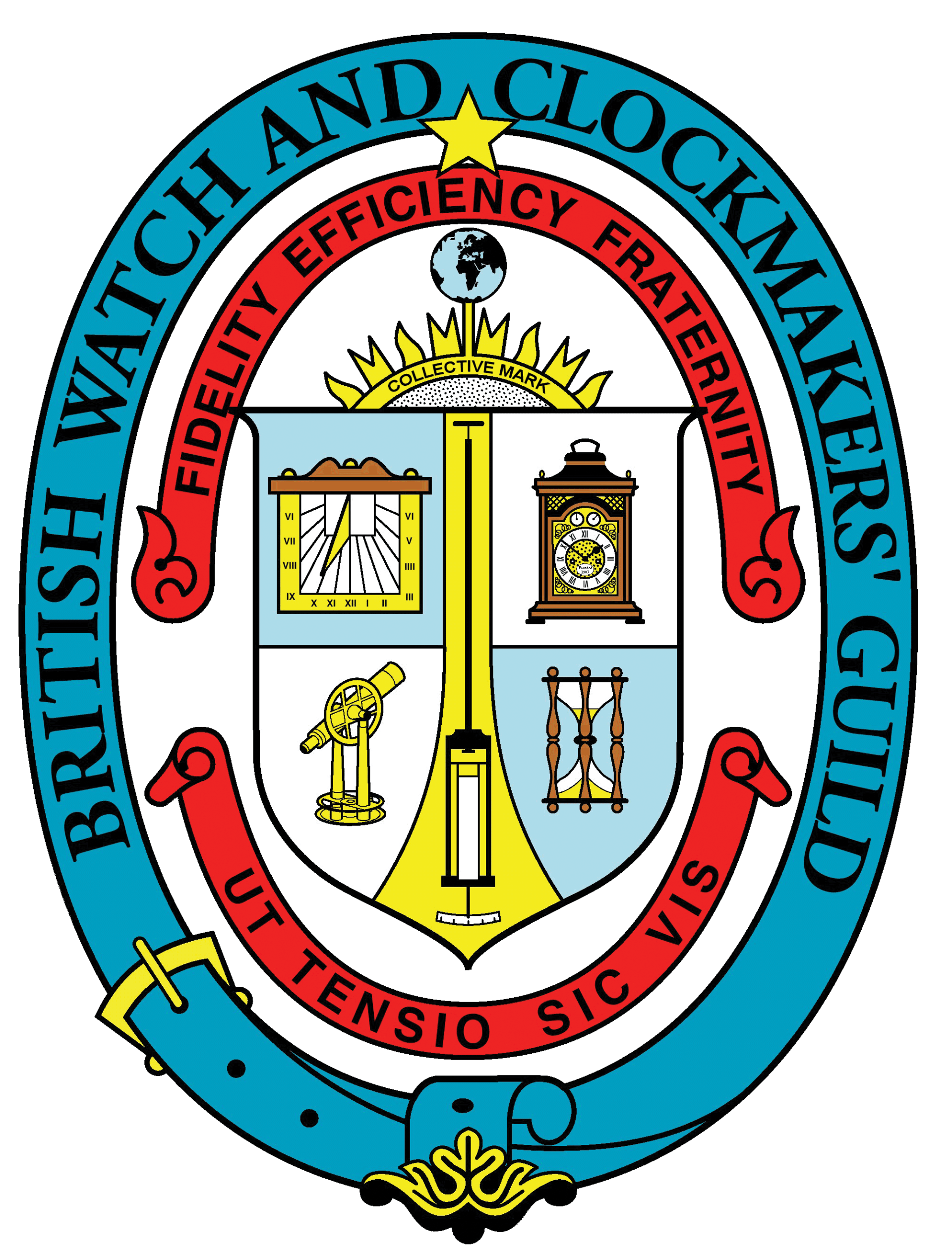Hector Golay & Sons Ltd. - Dashboard Watch No. 734
Watch Description:-
Hector Golay & Son Ltd. London - Fairey Swordfish Dashboard Watch No. 734
Importer: Hector Golay & Son Ltd. London
Model: HS4 - Dashboard Watch
Date:- Circa 1942
Case diameter ex crown: 62.5 mm
Dial Diameter: 55mm - dial marked 734 + Hector Golay & Son Ltd. LONDON
Case material: Steel chrome plated case and screwed case back marked HS4
Stores Ref. H.S.527-3638
Movement: Swiss - marked 734
Dial with black Roman numerals blued spade hands, centre seconds, chemin de fer chapter ring and outer minute track, the outer rotatable front bezel in black marked out in degrees with case mounted locking screw at 1 o'clock, the Swiss unsigned mechanical crown wind movement with onion shaped winder, the base metal case, 62mm diameter, with screw down back, verso engraved H^S.4.
The watch is housed in a plastic case marked STORES REF H.S.527-3638. The case is designed so that the watch can be dashboard mounted and easily demounted for maintenance etc..
This type of watch was used by the Fleet Air Arm in Fairey Swordfish aircraft during WWII. The 1941/1942 Admiralty Manual of Navigation describes this style as a beacon watch, only to be used in aircraft fitted with an R1147 radio receiver.
Aircraft carriers were equipped with a revolving beacon that continuously transmitted second pulses, making a full rotation once per minute. The crucial feature of this system was that the beacon emitted a different sounding signal when it was pointing due north.
Prior to launch, (these planes were catapulted into the air), the observer would tune the radio receiver to the beacon and set the bezel of the watch so that zero on the outer scale and the tip of the second hand aligned precisely at the time of the northern signal. When returning to the carrier, the observer on board the aircraft would turn on the radio and listen for the beacon's signal.
The strongest reception would be experienced when the beacon was pointing directly at the aircraft and, using the watch, the aircraft's position relative to its carrier could be found and the pilot given the course to take. The great benefit was that these slow aircraft could home in on their carrier from up to 100 miles away without sending out radio signals that may betray their position to the enemy.
In 1937 Hector Golay & Son Ltd of London were the only importers of Universal watches and chronographs and supplied the Ministry of Defence with dashboard mounted navigation watches such as this example. H^S.4 designation is described as a 'Dashboard Watch'.
